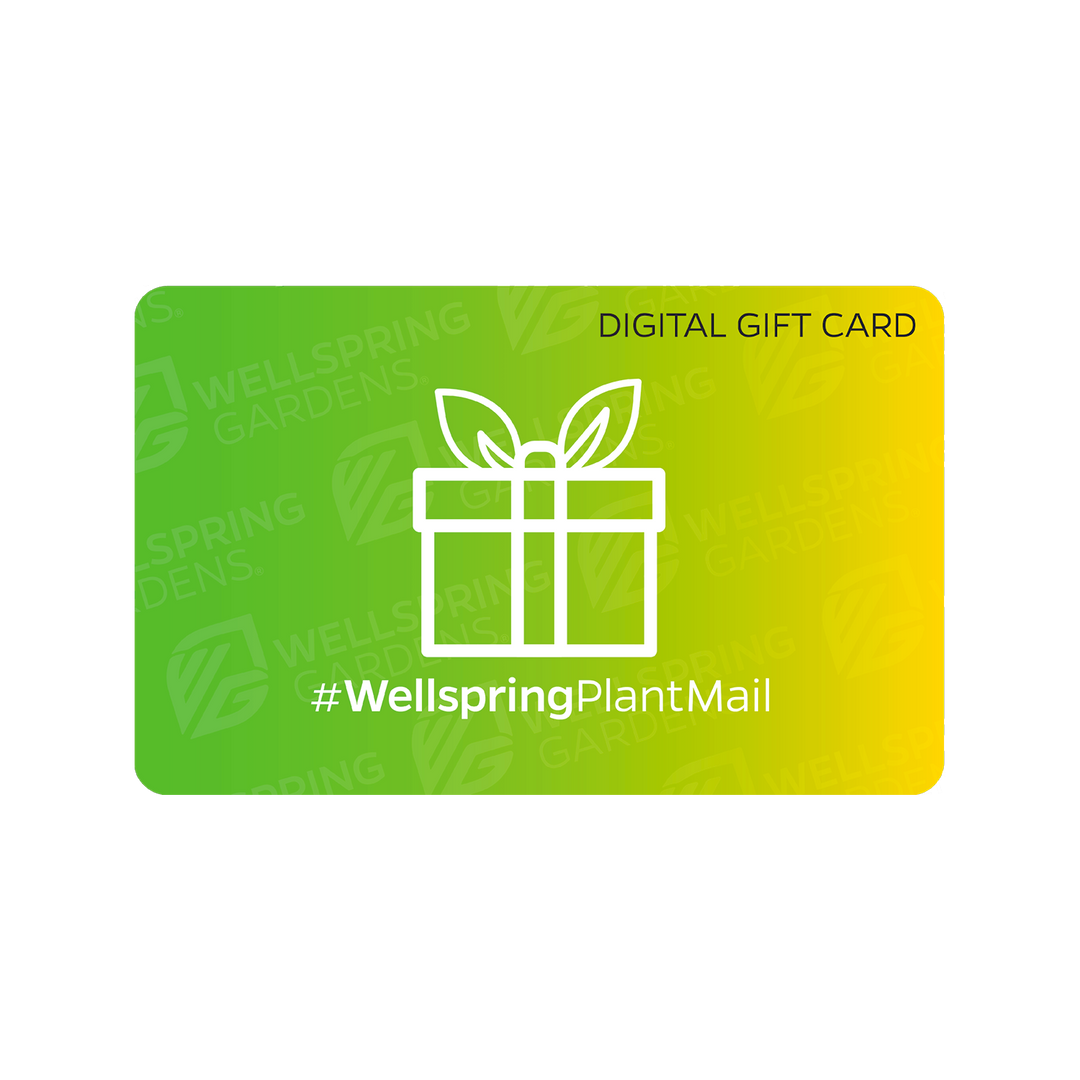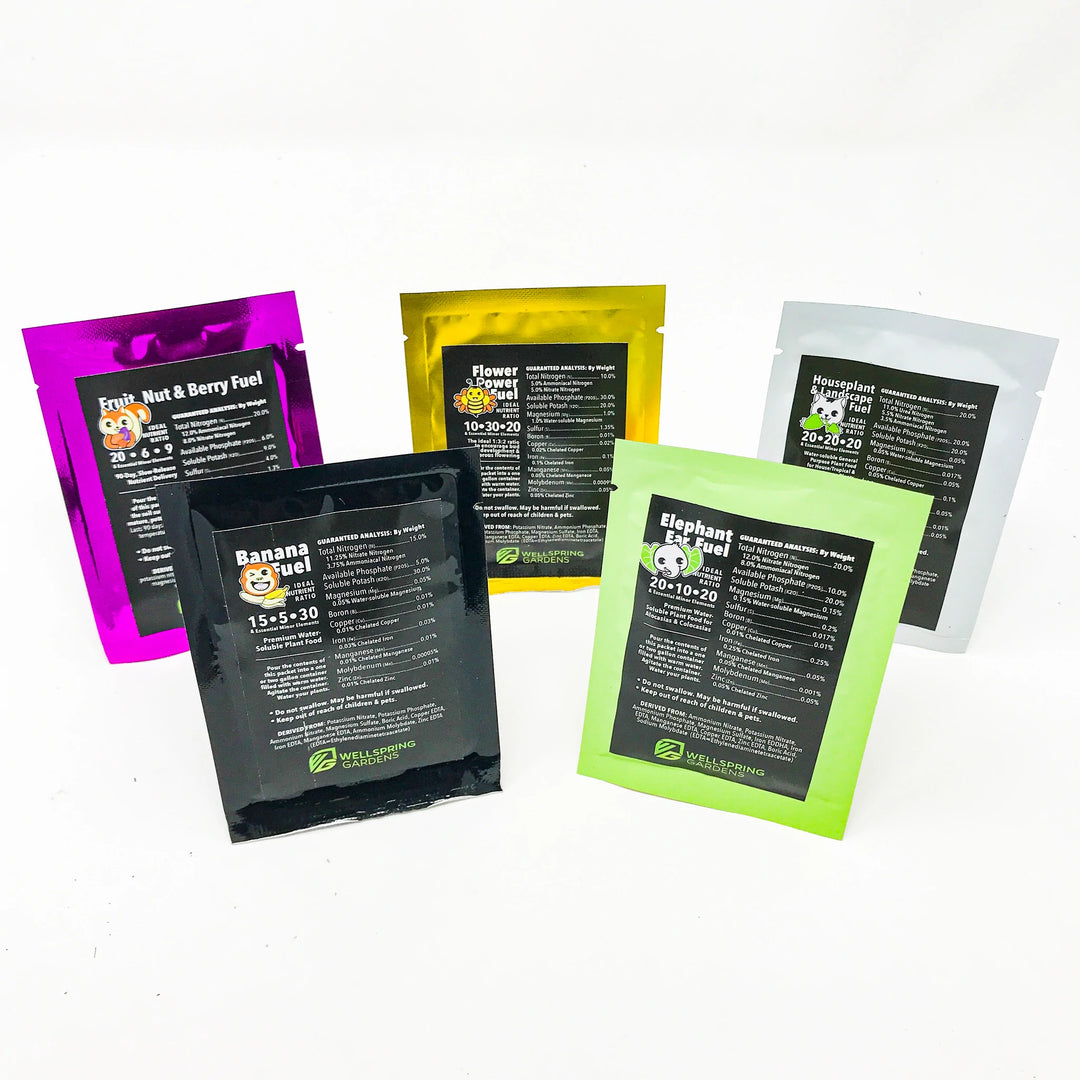Our Fertilizers Fuel Your Plants’ Growth
5-minute read
Ever wonder if fertilizer is really necessary? Ever felt lost with all different number combinations and terms? Read on to learn more about the various types of fertilizer and how they can help fuel your plant's growth.
Types of Fertilizer
Water–Soluble Fertilizers
Water–soluble fertilizers are powdered. Small amounts are measured and poured into room temperature water or slightly warm water. These fertilizers can be mixed right into a watering can or a bottle and used immediately or stored for a few days before use.
Slow–Release Fertilizers
Slow–release fertilizers are granules about the size of a BB that are sprinkled on top of the ground above the root zone. They slowly release nutrients over a long period of time. Some or all granules may be polymer-coated. This can benefit the plant because it provides an even nutrient supply and decreases waste through leaching. The benefits can outweigh the added cost.
What the numbers mean
Macronutrients
Plants need 18 elements for optimum growth and health. The three numbers represent three of the six major elements that plants require. They are known as the primary macronutrients. They are N-P-K or nitrogen (N), phosphorus (P), and potassium (K) and are universally listed in that order. The numerical value represents the percent of the overall weight. Thus a 20-20-20 fertilizer is 20% N, 20% P and 20% K. This formula is 60% fertilizer by weight and 40% filler. (Carbon, hydrogen and oxygen are macronutrients derived from air and water and thus are not part of the fertilizer formulas.)
Intermediate Nutrients
Calcium, magnesium, and sulfur may be included in fertilizer formulas but are often found in sufficient quantities in most soils or are added incidentally through other methods such as from irrigation water.
Micronutrients
Elements required in very small amounts are the micronutrients: iron (Fe), manganese (Mn), zinc (Zn), copper (Cu), boron (B), molybdenum (Mo), cobalt (Co), nickel (Ni), and chlorine (Cl).
Value
Formulas with small numbers, such as 6-6-6, are referred to as “low-analysis” fertilizers. Those with larger numbers, such as 20-20-20, are “high-analysis.” A 3-pound bag of 20-20-20 is equal to a 10-pound bag of 6-6-6 if other things are equal.
Examples:
3 pounds of 20-20-20 [3x(20+20+20)=180]
10 pounds of 6-6-6 [10x(6+6+6)=180]
Factors that increase quality and price include micronutrient inclusion, high analysis, and slow-release.
Our Fertilizers

Banana Fuel | 15-5-30 | Water–Soluble
This is the precise ratio formula recommended by banana growers.

Elephant Ear Fuel | 20-10-20 | Water–Soluble
We have had great success using this on our elephant ears. This can also be used on all types of plants with great success.

Fruit, Nut & Berry Fuel | 20-6-9 | Slow–Release 90 days
This formula helps to build strong, healthy plants and trees which can then provide exceptional yields. The slow–release formula gives steady nutrition over a 90-day period. Reapply every 90 days during the growing season.

Houseplant and Landscape Fuel | 20-20-20 | Water–Soluble
This is a great general–purpose fertilizer for both foliage and flowering plants.

Flower Power Fuel | 10-30-20 | Water–Soluble
Flower Power Fuel has a little less nitrogen and more phosphorus. This formula encourages flower formation.
Our fertilizers are available in both 14-ounce bags and 2-pound bags. Check out our full selection.






